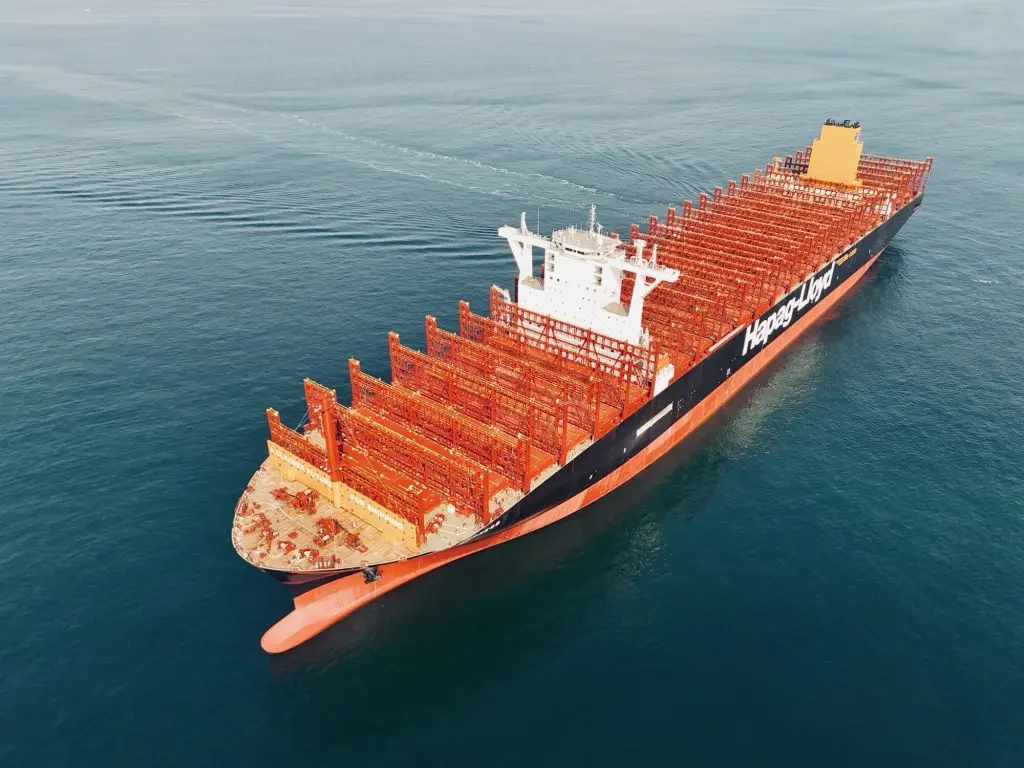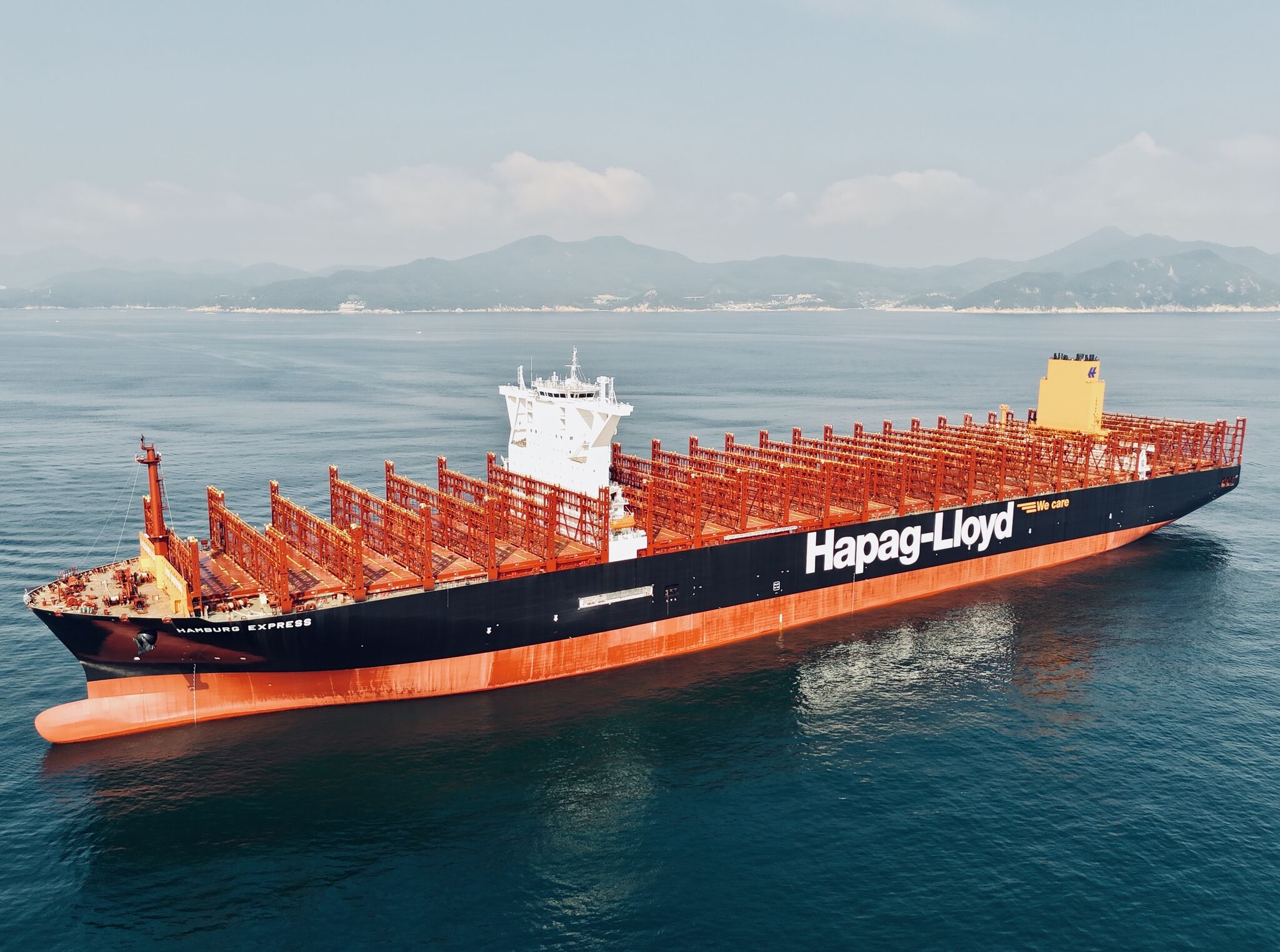This story requires a subscription
This includes a single user license.
South Korea’s Hanwha Ocean, previously known as DSME, handed over the 23,660-teu, Hamburg Express, Hapag-Lloyd said in a social media post on Tuesday.
This is the seventh vessel to join the “Hamburg Express Class”, the largest containerships ever to sail under the German flag, it said.
On November 4, Hamburg Express will be officially christened in Hamburg, Hapag-Lloyd said.
The containership already left Hanwha Ocean’s yard in Okpo and is on its way to China’s Ningbo, its AIS data provided by VesselsValue shows.
The ship and its sister vessels feature MAN ME-GI engines and LNG fuel tanks made of Posco’s high manganese steel.
Hanwha Ocean and steelmaker Posco jointly developed the tank named MCTIB (high manganese steel cargo tank independent type-B).
12 vessels
Hapag-Lloyd took delivery of the first of twelve LNG dual-fuel newbuilds, Berlin Express, in June last year.
The company first ordered six LNG dual-fuel containerships from Hanwha Ocean in 2020, and it added six more sister vessels in 2021. The orders have a total price tag of about $2 billion.
Moreover, the German shipping firm expects to take delivery of the remaining vessels in 2024 and 2025.
They are about 400 meters long and 61 meters wide.

Besides newbuilds, Hapag-Lloyd operates the converted containership, Brussels Express, the world’s first ultra-large containership LNG retrofit.
In April, this vessel completed what Hapag-Lloyd claims is the largest ship-to-ship bio-LNG bunkering operation in the Dutch port of Rotterdam.
In addition to bio-LNG, Hapag-Lloyd is also working on a synthetic methane project as it looks to further reduce emissions from its fleet of LNG-powered containerships.
New order
Beside these LNG dual-fuel containerships, Hapag-Lloyd is working on a new order for such vessels, shipbuilding sources told LNG Prime.
The German firm is considering to order the ships at South Korean or Chinese yards.
Hapag-Lloyd is interested in ordering LNG dual-fuel ships with a capacity of 8,000 teu and 17,000 teu, the sources said.
According to the sources, the vessels are expected to be ammonia-ready.

